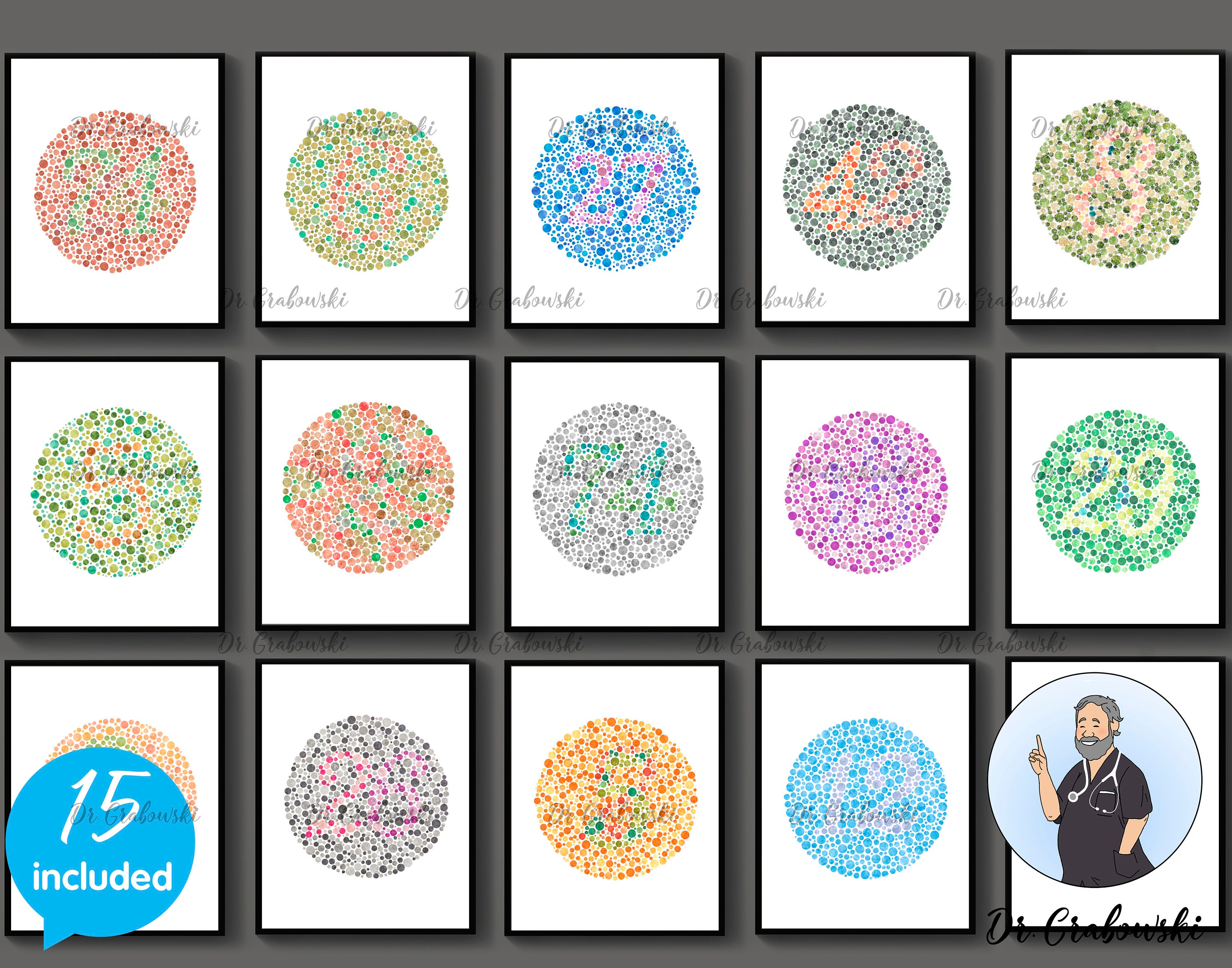
Ishihara Test for Color Blindness Color Perception Medical Etsy
Holmgren based his test on the Young-Helmholtz theory of colour perception which stated that there were three sets of colour perceiving elements in the retina. According to the theory, a defect in one of these elements caused a variant of colour-blindness. Holmgen designed the test to require matching, rather than naming of colours.

Colour blindness test chart, illustration Stock Image C049/7492 Science Photo Library
What is Ishihara Test. The Ishihara color blindness test is one of the most common color blind tests globally. Ishihara test mainly detects red-green color blindness. There are 38 plates in the Ishihara blind test, where each plate contains dots of different sizes and colors. All dots on plates are arranged in specific patterns to form numbers.
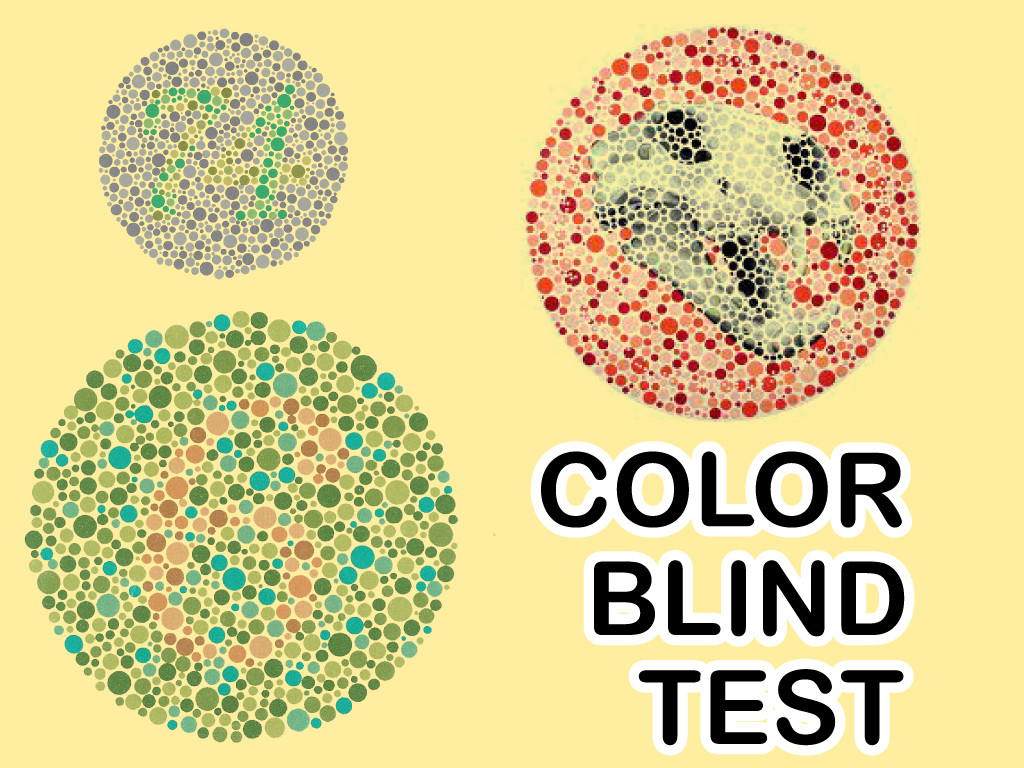
Colour Blindness Symptoms, Causes and Treatments
Color blindness test is designed to assess an individual's ability to perceive and differentiate between different colors. The most common type of color blindness is red-green color blindness, where individuals have difficulty distinguishing between red and green hues.

Colour blindness test chart, illustration Stock Image C049/7247 Science Photo Library
This series of plates is designed to provide a test which gives a quick and accurate assessment of color vision deficiency of congenital origin. This is the commonest form of color vision disturbances.
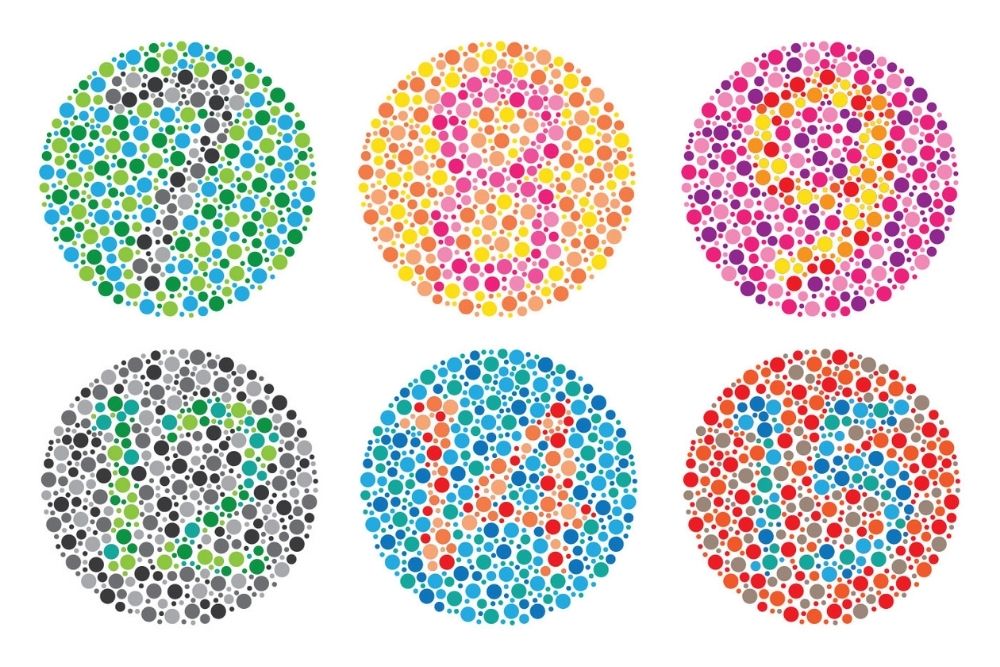
How Do You See Colors During a Color Blind Test? The Eye News
Color Oracle, a free color blindness simulator for Windows, Mac, and Linux FAQ Does this upload my PDF anywhere? No, your files stay on your own computer! This site just displays them for you in the browser, and applies a color mask to each page to simulate different kinds of color vision deficiency. Who made this site?
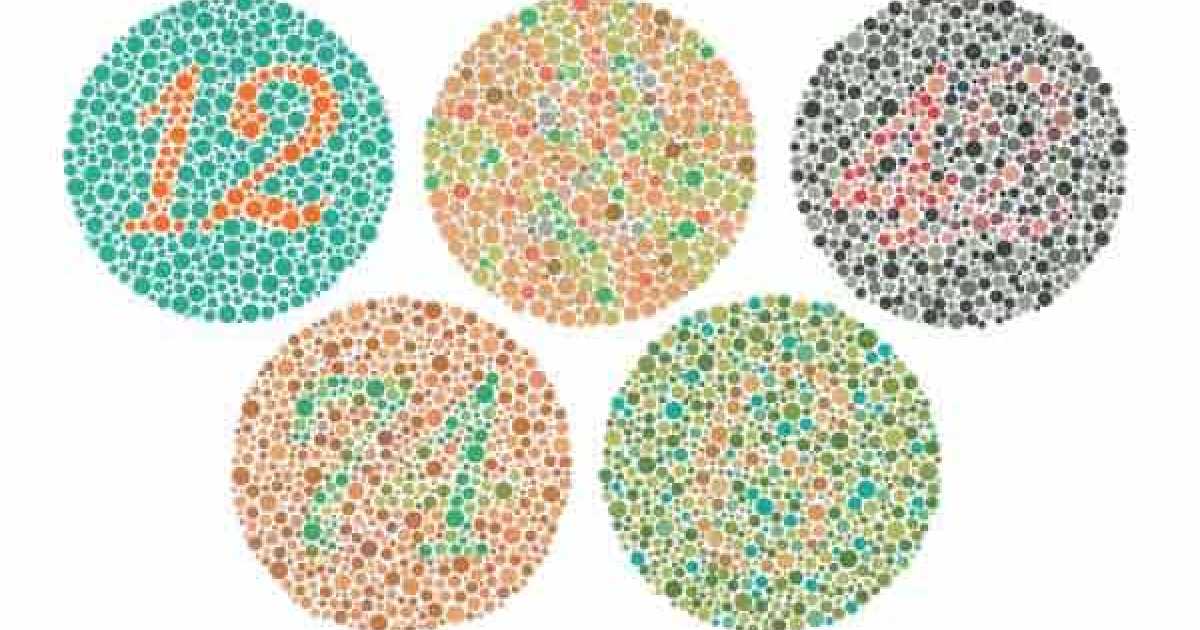
Ishihara test color blind test red green colorblind Ishihara test online
Color blindness happens when one or more types of cones have problems with their photosensitive pigments, affecting one or more of the primary colors of the vision. Despite having several possible.

science physics optics pseudoisochromatic color blindness test Fundamental Photographs The
Colorblindness is a condition that affects the cones in the eyes; it can be congenital or acquired and is considered an average disability that affects about 10% of the world's population..

Colour blindness test chart, illustration Stock Image C049/7462 Science Photo Library
The Ishihara color test is a test for color blindness* It was named after its designer, Dr. Shinobu Ishihara (1879-1963), a professor at the University of Tokyo, who first published his tests in 1917.* It makes use of the peculiarity that in red-green blindness, blue and yellow appear remarkably bright compared to red and green.*.
:max_bytes(150000):strip_icc()/GettyImages-470424759-c3b81309260a49c1b96deef976f5a0c6.jpg)
RedGreen Color Blind Tests Types and How to Check
EnChroma® Free Color Blind Test | Test Your Color Vision Take the free Enchroma color blind test to accurately assess your color perception. The results provide a recommendation for EnChroma color blind glasses.
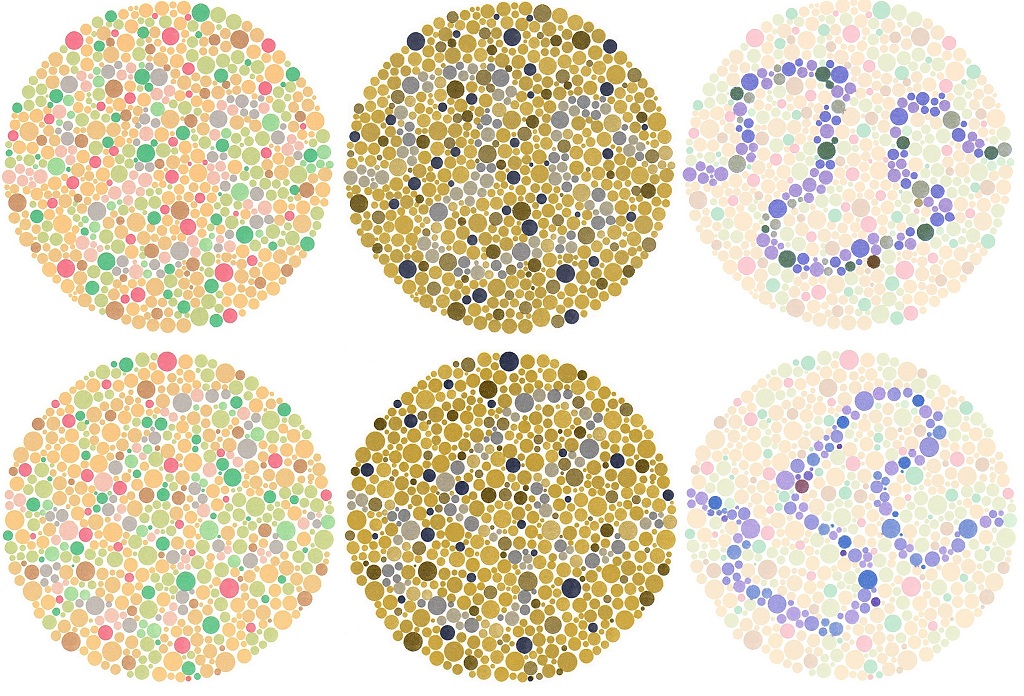
Ishihara tracing color blind test
So you or someone you know is colour blind? Grab our favourite corrective sunglasses: EnChroma Color Blind Glasses Or check out our shop for the full range of corrective glasses and other useful items for parents, teachers, and kids. Ishihara Color Test Instructions

Color Blind Test Test Color Vision by Ishihara Test for Colorblindness
FIGURE 1. Evaluation of potential correlation between Hardy-Rand-Rittler scores and other clinical tests of visual function. Data from 31 eyes (22 patients) with optic neuropathy are shown. Scatterplots show Hardy-Rand-Rittler (H-R-R) scores on the y-axis with Farnsworth D-15 score or contrast sensitivity on the x-axis.
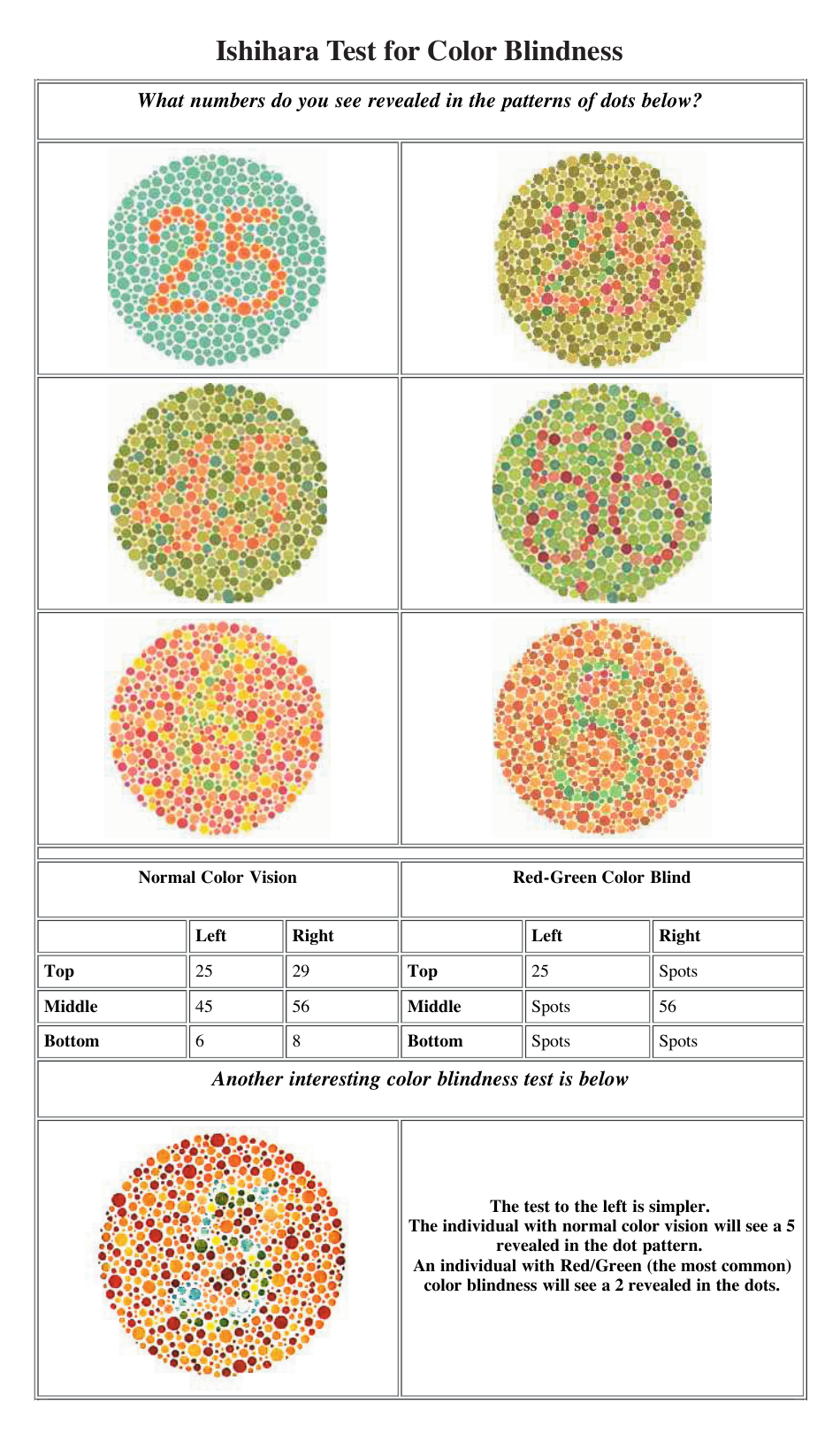
Ishihara Test for Color Blindness Chart Download Printable PDF Templateroller
Unlike old and outdated Ishihara tests developed back in 1917, our new color blind test uses the science of cone isolation to test the sensitivity of each of your eye's three color-sensing cones and scores them to show you how close or far you are from having normal color vision.

Colour blindness test chart, illustration Stock Image C049/7292 Science Photo Library
A very popular screening test for detecting the presence of color blindness is the Ishihara Color Vision Test. Shinobu Ishihara, a Japanese ophthalmologist, developed the test more than 100 years ago. It can quickly detect red-green color blindness (the most common color vision deficiency).

Color Blindness Test PDF
Documents. Ishihara 38. of 13. Match case Limit results 1 per page. 1 ISHIHARA COLOUR PLATES - 38 SET Plate 1 Everyone should see number 12. Plate 2 Normal view: 8 Red-green deficiency: 3 Plate 3 Normal view: 6 Red-green deficiency: 5. Upload: hector-lozada.
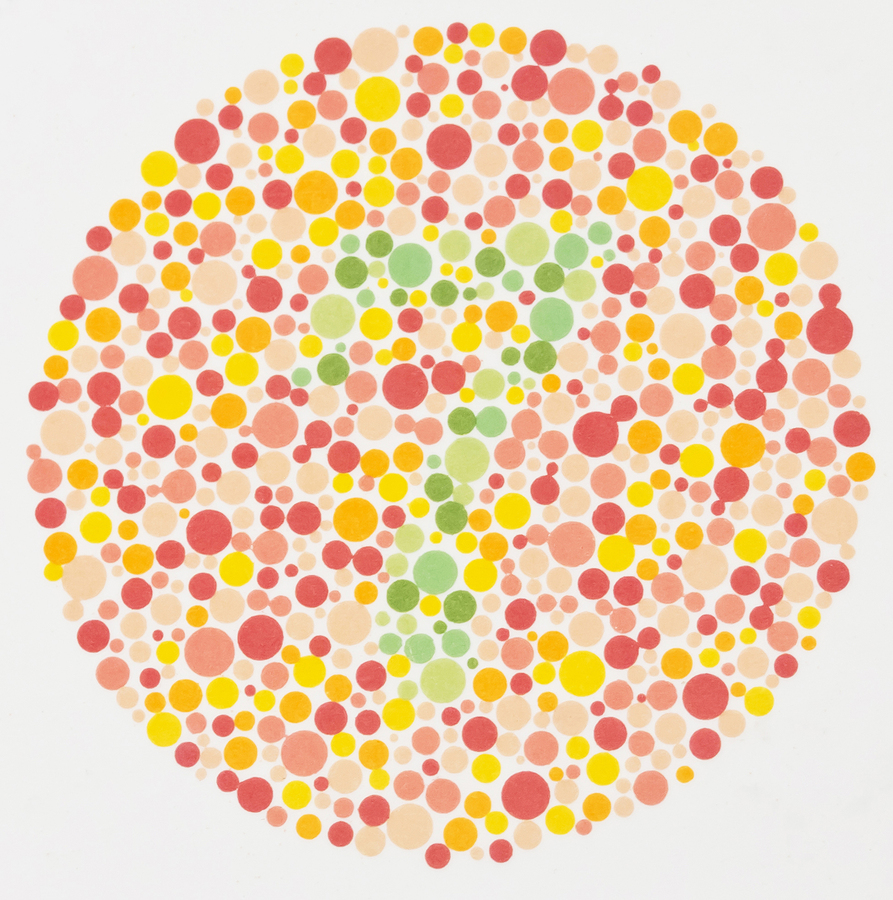
What is color blindness and what causes it? SUNY College of Optometry
The Ishihara test is a color vision test for detection of red-green color deficiencies.It was named after its designer, Shinobu Ishihara, a professor at the University of Tokyo, who first published his tests in 1917. The test consists of a number of Ishihara plates, which are a type of pseudoisochromatic plate.Each plate depicts a solid circle of colored dots appearing randomized in color and.

10 Images To Test The Color Blind Facts Verse
possibilities to test your color vision. This eBook on COLOR BLIND ESSENTIALS includes the following six parts:. Color blindness is a very common disease which is found all over the world. Different scientific studies show, that roughly 8% of all men and 0.5% of all women are colorblind. This numbers are supported by different studies and.